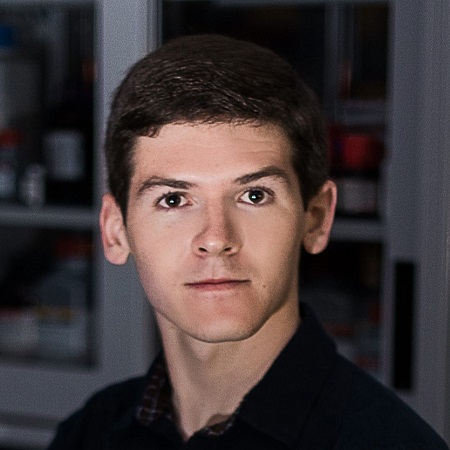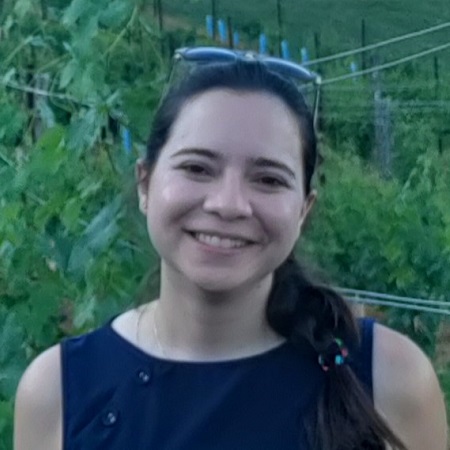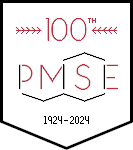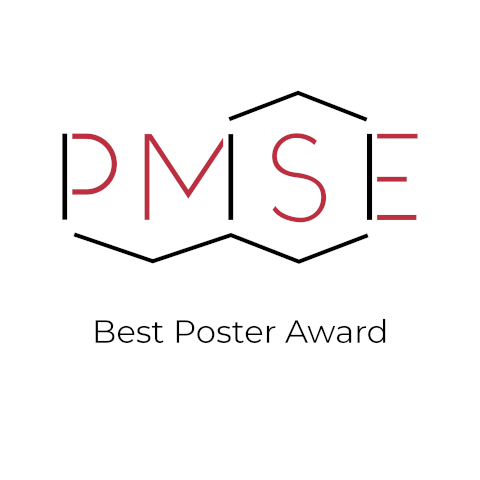A distinguished group of Judges from industry, academia, and government laboratories had the task of determining the winners of the PMSE Best Poster Competition at the Fall ACS meeting in San Francisco. Congratulations to our winners, who were also recognized at the POLY/PMSE Awards Reception.
NICHOLAS KREOFSKY
University of Minnesota

Cinchona Alkaloid Polymers Demonstrate Highly Efficient Gene Delivery Dependent on Stereochemistry, Methoxy Substitution, and Length
Nicholas Kreofsky is a fourth-year Ph. D. candidate in the Department of Chemistry at the University of Minnesota under the advisement of Prof. Theresa Reineke. Nicholas received his undergraduate degree in chemistry from Creighton University in 2019. During his time at Creighton, he worked in Dr. James Fletcher’s research laboratory, synthesizing and screening novel organometallic compounds for use as antimicrobial agents. Upon starting graduate school, Nicholas joined the Reineke Group to study polymer-based gene delivery systems. In graduate school, he has been awarded the NSF Graduate Research Fellowship and the 3M Science and Technology Fellowship to fund his work. Nicholas’ current research is concerned with utilizing cinchona alkaloid-based polymers to efficiently deliver genetic material and uncover the structure-activity relationships within this system.
JASON M. KRONENFELD
Stanford University

3D, Shape-specific, Scalable, Micro-fabricated Particle Production via Roll-to-roll Printing and Continuous Liquid Interface Production (r2rCLIP)
Jason M. Kronenfeld is a Chemistry PhD candidate at Stanford University. He received his Bachelor’s degree in Chemistry from The University of Arizona in 2021. While at UArizona, Jason trained with Dr. Benjamin J. Renquist leading work on creating a novel approach to address glycemic control for treatment of type two diabetes mellitus.
Jason is a member of Dr. Joseph M. DeSimone’s research group at Stanford where he conducts 3D printing research utilizing high-resolution continuous liquid interface production (CLIP). Focus areas include printer and resin development, roll-to-roll CLIP for en masse micro-fabricated particle production, and direct translational applications for precisely fabricated components. Support for research comes from a National Science Foundation Graduate Research Fellowship. Outside of the lab, Jason is involved as a graduate student representative for the Stanford Committee on Research, an editor for The Civilian (a novel, public science communication initiative), and a member of the Stanford Viennese Ball Opening Committee (a student-led waltz performance group).
CAMERON MALLOY
University of Arizona

Impact of Mechanical Properties on Molecularly Imprinted Polymers Sensing PFAS
Cameron Malloy is a third-year Ph.D. candidate in the Department of Chemical and Environmental Engineering at the University of Arizona under the advisement of Professor Suchol Savagatrup. He received his bachelor’s degree in chemical engineering from the University of Arizona in 2021. Cameron’s research interests center around using nanotechnology and soft materials for the development of practical sensors. His doctoral research focuses on the engineering of molecularly imprinted polymers by seeking to develop a fundamental understanding of the relationship between the imprinted polymer structure and function. Understanding these underpinning mechanisms could lead to a set of design rules to produce reliable and practical sensors. Support for his research comes from the National Science Foundation Graduate Research Fellowship Program.

NARELLI DE PAIVA NARCISO
Stanford University
Injectable Hydrogels for the Delivery of Minicircle-based Myocardial Infarction Therapy
Narelli is a Ph.D. Candidate in Prof. Sarah Heilshorn group, at the Materials Science and Engineering Department at Stanford University. She works in developing injectable hydrogels for minimally-invasive delivery of gene therapies to the heart. Her research focuses on applying bioconjugation techniques to functionalize recombinant proteins with dynamic covalent chemistry, and optimizing the mechanical properties of the resulting hydrogels for ease hand-injectability.”





